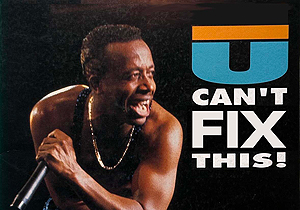PSTA staff will give a “Sunrunner one month update” report to the PSTA board tomorrow morning. The presentation includes social media impression claims, survey results, a dozen children…and beer.
 However, completely absent from PSTA’s presentation is a comparison of the number of Sunrunner boardings in November with PSTA’s own projections for ridership. These projections were made just five months before the Sunrunner began running. The Guardian reported on PSTA’s projections and the Sunrunner’s catastrophically low ridership numbers last week.
However, completely absent from PSTA’s presentation is a comparison of the number of Sunrunner boardings in November with PSTA’s own projections for ridership. These projections were made just five months before the Sunrunner began running. The Guardian reported on PSTA’s projections and the Sunrunner’s catastrophically low ridership numbers last week.
Buried on page 12 of PSTA’s 13-page report is this bar chart of “Sunrunner boardings” by station, both westbound and eastbound. Nowhere in the report are those numbers added up, so we performed the challenging task known as “addition” that PSTA staff didn’t undertake.
The total? There were 59,798 total Sunrunner boardings for the month of November. That’s 1,993 per day on average, which is below half of the 4,000 per day that PSTA projected just 5 months before the line opened. Prior to this year, PSTA had made even higher ridership projections. It is currently free to ride the Sunrunner (free through April), so the dreadful ridership numbers are likely to get worse once PSTA starts charging a fare.
“Transit ridership has declined nationally, and that’s a permanent change,” Randal O’Toole told the Guardian. “The decline is one of the lasting legacies of COVID as more people work from home.”
O’Toole was the Cato Institute’s transportation policy analyst before starting to work independently in 2021. He has written extensively over many years, both books and articles, and been published in Wall Street Journal and other national media.

“The annual American Community Survey (ACS) published by the Census Bureau shows that new ‘work from home’ workers are disproportionately former transit riders,” O’Toole said. “We can see that by comparing the 2019 responses with the 2021 responses in the ACS.”
“Because of this permanent decline, transit agencies are now looking for new reasons to justify their existence,” O’Toole said. “They come up with terms like ‘essential worker’ and other nonsense as a rationale to waste tax dollars.”
PSTA went even further: just two months after COVID hit Pinellas County, PSTA used the term “essential rider” in a May 26, 2020 press release. It announced that “PSTA Gives Away Free Bandana Face Coverings to Essential Riders – More than 3,000 to be given out staring [sic] today.” PSTA also used the term “essential rider” in other communications, e.g. in this Facebook post.
“Essential riders” must be different from the much ridiculed term “essential workers” since PSTA distinguishes between the two.
PSTA even conducted this “Essential Rider Survey,” using tax dollars to give away Walmart gift cards to survey participants. Offering inducements skews any survey result because the population that would take the survey without being bribed is different than the one that responds to bribes.
 Given PSTA’s past attempt to deflect from poor ridership using made up terms like “essential rider,” their present deflection from the monumental failure of the Sunrunner is hardly surprising. But we here at the Guardian can invent new terms, too. Our new term is “SunBummer” to describe the present ridership reality, as opposed to the fantasy world that the term “Sunrunner” represents.
Given PSTA’s past attempt to deflect from poor ridership using made up terms like “essential rider,” their present deflection from the monumental failure of the Sunrunner is hardly surprising. But we here at the Guardian can invent new terms, too. Our new term is “SunBummer” to describe the present ridership reality, as opposed to the fantasy world that the term “Sunrunner” represents.
PSTA’s survey of Sunrunner passengers asked “what was the purpose of your trip?” 84% passengers answered “leisure” and only 11% answered “work.” That data can be seen in PSTA’s one month update.
“I’ve never heard of a transit line in which more than 80 percent of the riders claim to be riding it for leisure,” O’Toole said when asked about this. “The question then becomes: why should the general public subsidize leisure travel?”
As always, the Guardian reports and the readers decide. Please like our Facebook page to find out when we publish new stories.


